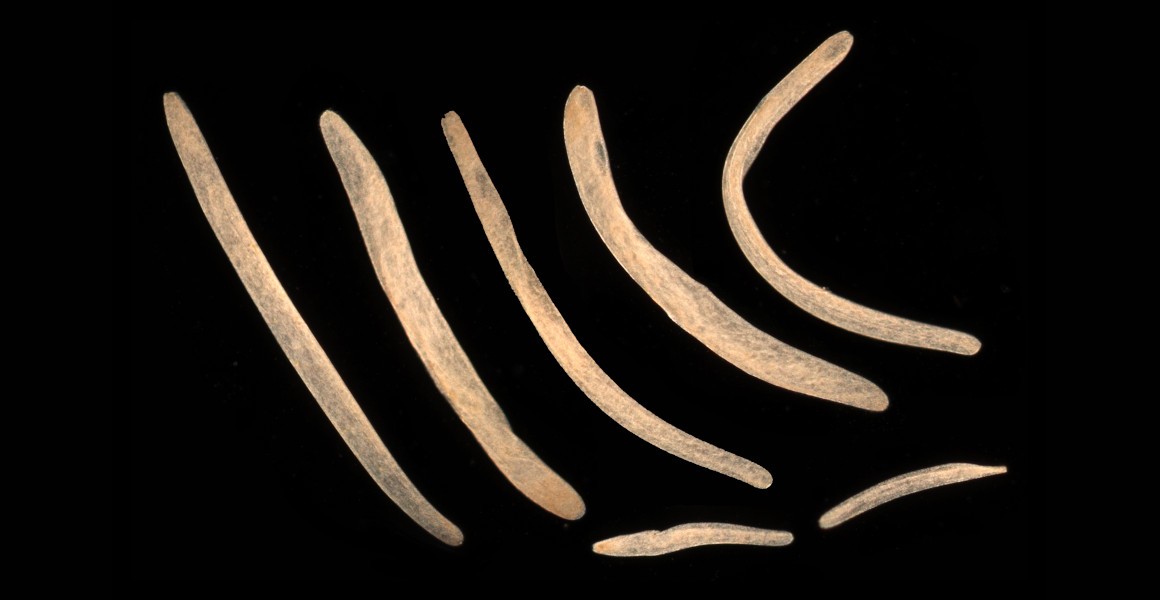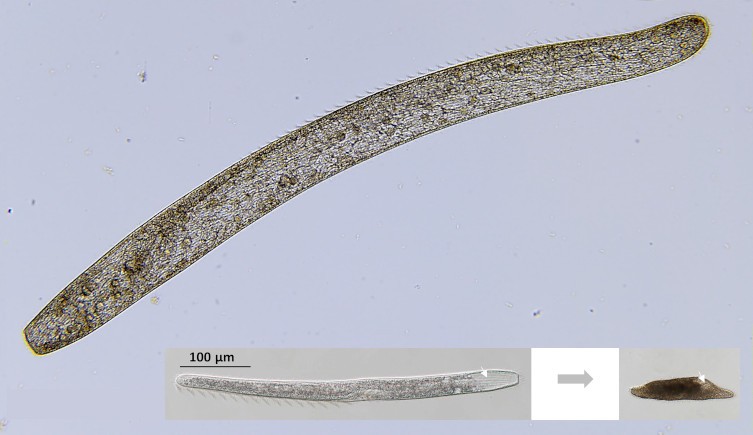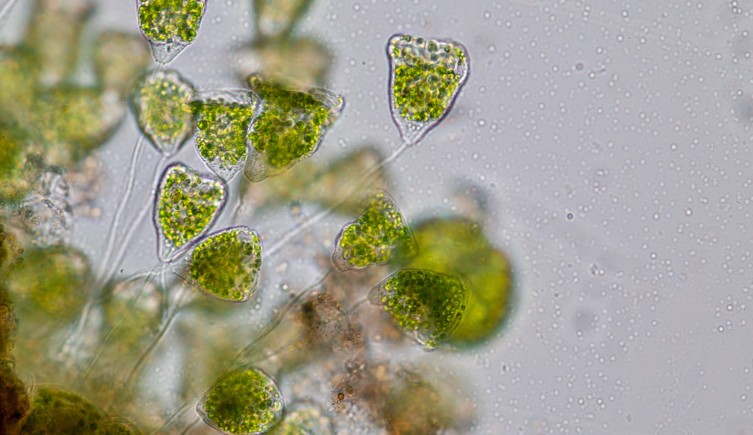
Newsroom
How One of Nature's Fastest Cells can Vanish in the Blink of an Eye

The ciliate Spirostomum can shrink by up to 75% in a matter of milliseconds. Image ? Maple Ferryman/Shutterstock
Researchers have caught up with one of the fastest movements in nature.
Able to contract faster than a racing car, Spirostomum's abilities could one day be copied to develop faster machines.
The secrets of a cell's vanishing act have finally been revealed.
A single-celled organism known as Spirostomum can shrink to just a quarter of its size in just five milliseconds, which is over 50 times faster than the blink of an eye. While its speed has long been known about, researchers have long wondered what mechanisms allow it to shrink so rapidly.
A new paper, published in the journal Science Advances, has revealed more about just how Spirostomum carries out its disappearing act. It reveals that the proteins which support its structure rapidly change shape, causing it to collapse like a spring until it can rebound.
Dr Alan Warren, a Scientific Associate at the Museum who co-authored the paper, says that this behaviour might help Spirostomum avoid being eaten.
'The contraction of Spirostomum is one of the fastest movements in nature and is similar to that in peritrich ciliates which is assumed to help this group to avoid predators,' Alan says.
'These ciliates contract so quickly that they effectively vanish much faster than the blink of an eye, before a predator would be able to lock onto them.'
Designs inspired by Spirostomum could help to develop faster and smaller machinery in the future.

The shrinking of Spirostomum also causes the organism to lose its worm-like shape. Main image ? ExaVolt, licensed under CC BY-SA 4.0 via Wikimedia Commons and inset image ? Zhang et al., licensed under CC BY-NC 4.0 via Science Advances
Spirostomum is a ciliate, a single-celled organism with tiny hairs known as cilia which give them their name. These cilia help ciliates to swim, feed and sense the many different places that these organisms can be found.
'Ciliates live in marine and freshwater environments, as well as in soils if they're moist enough,' Alan says. 'Some specialised ciliates have even co-evolved with ruminant animals such as cows, living in their digestive system.'
While the majority of ciliates are microscopic, often measuring between 0.02 – 0.2 millimetres long, Spirostomum is many times bigger, which makes it visible to the human eye. When fully elongated, it looks like a small worm, and measures from one to several millimetres long.
When Spirostomum shrinks, however, it can be only a quarter of a millimetre or less. As the average human eye can only see anything larger than a tenth of a millimetre, this means it can seemingly disappear in an instant.
Though its shrinking speed isn't that high overall, what matters is Spirostomum's acceleration. Contracting at the equivalent of 140 metres per second squared, the cell shrinks faster than a cheetah can dash to its top speed.
While other organisms have body parts which accelerate faster, such as the sting of a jellyfish or the launch of pollen from a flower, this can only happen once. After taking a short period to recharge, Spirostomum can shrink again and again.
Each bout of contraction pushes fluid out of the body, causing changes to the flow of water in the nearby area. This can trigger nearby Spirostomum cells to contract, allowing disparate individuals to act as one.
A Nature paper, published in 2019, suggests that this could help to increase the circulation of nutrients in the local area, or even spread toxins to defend against predators.

The shrinking ability of another ciliate, Vorticella, has been known about for over 300 years. Image ? Rattiya Thongdumhyu/Shutterstock
While knowledge of Spirostomum's shrinking has been increasing over time, the proteins which allow it to do so have remained elusive.
Some existing research has suggested that its method of contraction is similar to certain ciliates which have proteins known as spasmins that allow them to shrink rapidly.
These are not enough to power this contraction on their own, however, and so researchers have been looking for other molecules which bind to spasmins to make up the shortfall.
To try and discover them, a research team led by Dr. Wei Miao at the Institute of Hydrobiology, Chinese Academy of Sciences working in collaboration with Alan sequenced Spirostomum's genome and identified two proteins they called Giant Spasmin Binding Proteins (GSBP1 and GSBP2), as well as two spasmins.
Closer examinations of the proteins revealed they had all the necessary structures to work as part of the mesh-like structure that lies beneath Spirostomum's cell membrane which is thought to allow it to shrink.
To trigger shrinking, calcium ions are released and bind to the spasmins, which alongside the GSBPs cause the mesh's shape to change. Once Spirostomum has shrunk, the calcium is pumped away, allowing the elastic parts of the cell's structure to spring the ciliate back into shape.
The ciliate's ability to spring back has caught the interest of researchers hoping to artificially imitate it, as part of a field known as biomimetics. Ultrafast switches and microscopic motors could be among the technologies inspired by the structure of Spirostomum and other ciliates.